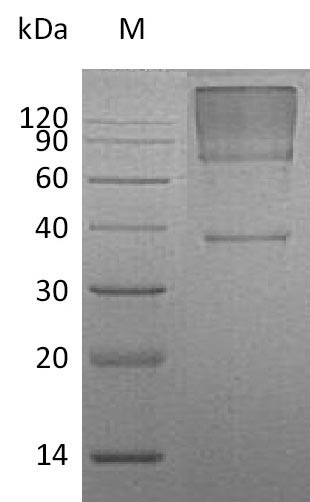Cookie preferences
This website uses cookies, which are necessary for the technical operation of the website and are always set. Other cookies, which increase the comfort when using this website, are used for direct advertising or to facilitate interaction with other websites and social networks, are only set with your consent.
Configuration
Technically required
These cookies are necessary for the basic functions of the shop.
"Allow all cookies" cookie
"Decline all cookies" cookie
CSRF token
Cookie preferences
Currency change
Customer-specific caching
FACT-Finder tracking
Individual prices
Selected shop
Session
Comfort functions
These cookies are used to make the shopping experience even more appealing, for example for the recognition of the visitor.
Note
Show the facebook fanpage in the right blod sidebar
Statistics & Tracking
Affiliate program
Conversion and usertracking via Google Tag Manager
Track device being used

If you have any questions, please use our Contact Form.
You can also order by e-mail: info@biomol.com
Larger quantity required? Request bulk
You can also order by e-mail: info@biomol.com
Larger quantity required? Request bulk
Organism: Homo sapiens (Human). Source: Mammalian cell. Expression Region: 25-559aa. Protein... more
Product information "Glypican-3 (GPC3), partial (Active), human, recombinant"
Organism: Homo sapiens (Human). Source: Mammalian cell. Expression Region: 25-559aa. Protein Length: Partial. Tag Info: C-terminal 6xHis-tagged. Target Protein Sequence: QPPPPPPDAT CHQVRSFFQR LQPGLKWVPE TPVPGSDLQV CLPKGPTCCS RKMEEKYQLT ARLNMEQLLQ SASMELKFLI IQNAAVFQEA FEIVVRHAKN YTNAMFKNNY PSLTPQAFEF VGEFFTDVSL YILGSDINVD DMVNELFDSL FPVIYTQLMN PGLPDSALDI NECLRGARRD LKVFGNFPKL IMTQVSKSLQ VTRIFLQALN LGIEVINTTD HLKFSKDCGR MLTRMWYCSY CQGLMMVKPC GGYCNVVMQG CMAGVVEIDK YWREYILSLE ELVNGMYRIY DMENVLLGLF STIHDSIQYV QKNAGKLTTT IGKLCAHSQQ RQYRSAYYPE DLFIDKKVLK VAHVEHEETL SSRRRELIQK LKSFISFYSA LPGYICSHSP VAENDTLCWN GQELVERYSQ KAARNGMKNQ FNLHELKMKG PEPVVSQIID KLKHINQLLR TMSMPKGRVL DKNLDEEGFE SGDCGDDEDE CIGGSGDGMI KVKNQLRFLA ELAYDLDVDD APGNSQQATP KDNEISTFHN LGNVH. Purity: Greater than 95% as determined by SDS-PAGE. Endotoxin: Less than 1.0 EU/µg as determined by LAL method. Biological Activity: Measured by its binding ability in a functional ELISA. Immobilized Human FGFb (146AA) at 2 µg/ml can bind Human GPC3 (C-6His), the EC50 of Human GPC3 (C-6His) is not higher than 50 ng/ml. Form: Lyophilized powder. Buffer: Lyophilized from a 0.2 µm filtered 1xPBS, pH 7.4. Reconstitution: We recommend that this vial be briefly centrifuged prior to opening to bring the contents to the bottom. Please reconstitute protein in deionized sterile water to a concentration of 0.1-1.0 mg/mL.We recommend to add 5-50% of glycerol (final concentration) and aliquot for long-term storage at -20 °C/-80 °C. Our default final concentration of glycerol is 50%. Customers could use it as reference. Storage: The shelf life is related to many factors, storage state, buffer ingredients, storage temperature and the stability of the protein itself. Generally, the shelf life of liquid form is 6 months at -20 °C/-80 °C. The shelf life of lyophilized form is 12 months at -20 °C/-80 °C. Notes: Repeated freezing and thawing is not recommended. Store working aliquots at 4 °C for up to one week. Relevance: Glypican-3/GPC3 is a member of the glypican family. It belongs to the glypican family and is highly expressed in lung, liver, and kidney. It is a heparan sulfate proteoglycan, which is overexpressed in various neoplasms such as hepatocellular carcinoma, malignant melanoma, and testicular yolk sac tumor, and plays an important role in cell growth and differentiation. GPC3 function is tissue dependent. In some tissues, GPC3 acts as a tumor suppressor gene, whereas in others, it acts as an oncofetal protein. GPC3 is a reliable marker for hepatocellular carcinoma. The sensitivity and specificity exceeds both alpha-fetoprotein and hepatocyte-paraffin1. GPC3 immunohistochemistry can aid in the differentiation of testicular germ cell tumors, being expressed in all yolk sac tumors but not in seminomas. GPC3 expression has also been identified in some squamous cell carcinomas of the lung and clear cell carcinomas of the ovary. Glypican-3 is currently regarded as a tumor marker and potential target for immunotherapy. Reference: n/a. Function: Cell surface proteoglycan that bears heparan sulfate. Inhibits the dipeptidyl peptidase activity of DPP4. May be involved in the suppression/modulation of growth in the predominantly mesodermal tissues and organs. May play a role in the modulation of IGF2 interactions with its receptor and thereby modulate its function. May regulate growth and tumor predisposition.
| Keywords: | OCI5, GPC3, Recombinant Human Glypican-3 (GPC3), partial (Active) |
| Supplier: | Cusabio |
| Supplier-Nr: | AP005371HU |
Properties
| Application: | Active protein |
| Conjugate: | No |
| Host: | Mammalian cells |
| Species reactivity: | human |
| MW: | 61.6 kD |
| Purity: | >95% (SDS-PAGE) |
| Format: | Lyophilized |
Database Information
| KEGG ID : | K08109 | Matching products |
| UniProt ID : | P51654 | Matching products |
| Gene ID : | GeneID 2719 | Matching products |
Handling & Safety
| Storage: | -20°C |
| Shipping: | +4°C (International: +4°C) |
Caution
Our products are for laboratory research use only: Not for administration to humans!
Our products are for laboratory research use only: Not for administration to humans!
You will get a certificate here
Viewed

